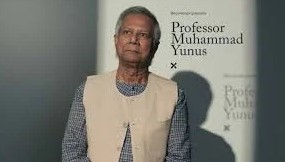Sangeeta Das
Assam Chief Minister Himanta Biswa Sarma
hailed the ongoing restoration and preservation works of Guwahati’s many
pivotal wetlands or water bodies, which are helpful in mitigating urban flood.
The Guwahati Metropolitan Development
Authority or GMDA has been actively involved in the restoration of Silsako Beel,
the large urban water body in Guwahati and important for managing rain water flowing
down from nearby hills.
Taking to X, CM Himanta noted “wetland
preservation is key factor in solving the issue of urban flooding”.
He appreciated the authorities for being
“able to restore a good portion of Silsako’s natural channel”. Similar
preservation tasks for other water bodies in Guwahati are on the offing, he
wrote further.
The preservation of water bodies is
surely akin to saving the diverse habitats of aquatic life. This apart, it attracts
people closer to nature, infusing respect and understanding of the natural
environment inside people’s heart and mind.
The tasks are part of a broader
initiative under the Guwahati Water Bodies (Preservation and Conservation) Act,
implemented in 2008 and amended in 2010.
It covers three wetlands – Deepor,
Silsako and Borsola-Sorusola – for protection due to their prominent role in mitigating
flooding and facilitating refuge to migratory birds and local wildlife.
GMDA Tasks Are:
- Desilting and cleaning the Pamohi Channel
that leads to Deepor Beel - Addressing problems related to the NH37
drain - Maintaining the ecological balance, preventing
the encroachment and land filling of these water bodies in the first phase - Residents of area near Silsako were
ensured of resettlement ahead of the implementation of the Guwahati legislation.
CM Himanta’s praise for these preservation
efforts demonstrates the Assam Government’s dedication to environmental rewards
as well as sustainable growth. The preservation of water bodies is a testament
to the State’s proactive approach to maintaining its natural resources and
protecting its rich biodiversity.
















